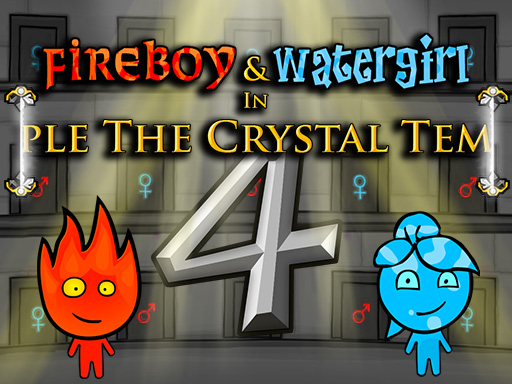Roam the diner. Read the shadows. Survive the night.
About Those Nights At Fredbears
Walk the diner after dark and trust your instincts
Those Nights At Fredbears drops you into a shuttered family restaurant where smiles have long since faded and the after-hours routine belongs to things that hum, clank, and scrape across linoleum. Unlike static camera survival games, Those Nights At Fredbears lets you move—you push open service doors, edge down cramped hallways, and hover in the threshold between safety and a terrible noise you’re not ready to confirm. Your objective seems simple: last until morning. In practice, survival in Those Nights At Fredbears is a careful balance of attention, restraint, and nerve, where every hiss of a vent or jitter of a relay becomes a map pin that tells you where not to be next.
Play the environment like an instrument
Sound, distance, and timing are your best tools in Those Nights At Fredbears. Footfalls carry through ducts, servo whines announce turns at intersections, and the soft stutter of a light relay marks a patrol crossing your path. You’ll lean into the quiet, using a wall to dampen noise or choosing a longer route because the short way hums with trouble. With each lap of the diner, Those Nights At Fredbears teaches you tiny truths—the freezer door thumps right before a shift change, the arcade’s attract mode masks soft steps, the party room echoes differently when something large is inside. You begin to plan travel windows, memorizing beats, and hitching movement to reliable pauses.
Freedom to move, pressure to decide
At first, Those Nights At Fredbears is generous with space. You have a handful of hide spots, a ring of rooms, and a pocketful of small resources that stabilize your odds. But every free decision carries cost. Study a corridor too long and patrols converge. Sprint because you’re scared and your echo convinces something to investigate. The magic of Those Nights At Fredbears is the way it makes simple navigation feel like defusing a device with nothing but instinct and thin hints waved at you by the dark.
Learn the loop and escalate your mastery
Each night in Those Nights At Fredbears nudges the rules. A door that was safe becomes key-locked and forces a detour. A formerly predictable route picks up an extra sweep. A new animatronic joins the roster and breaks the rhythm you were starting to trust. You develop plans within plans: a quiet route, a risk route, a gut-call route you’d rather not use. Because Those Nights At Fredbears emphasizes movement over monitor watching, these routes feel physical—you remember where the carpet snags, which tiles squeak, and where the exit sign’s glow helps more than your flashlight ever will.
Resources that matter because they end
Light, power, and attention are consumables in Those Nights At Fredbears. You ration a flashlight beam like it costs you years, snap it off mid-sweep when a motor coughs behind a wall, and count to three before tapping it back on at knee height to avoid a glare that steals your night vision. A tool that reveals too much invites pursuit, so in Those Nights At Fredbears your favorite gear is caution. And yet, caution can starve you of the documents and notes tucked into the diner’s cracks—logs, memos, and handwritten fragments that make the place uncomfortably specific.
Story told by what you bump into
Environmental storytelling is the quiet current that pulls you through Those Nights At Fredbears. A torn schedule beside a locked office, a repair ticket with smudged grease, a cake order crossed out with a different pen—these details don’t speak loudly, but they stack until the building itself feels like a witness. As you gather scraps, Those Nights At Fredbears reshapes from a simple survival challenge into a tension-wrapped scavenger hunt where context is your best weapon. Knowing that a performer suits up from the west service bay changes how you path. Learning that a certain animatronic’s joint motors stall after a 90-degree turn tells you exactly when to slip past.
Movement as puzzle, hiding as tactic, listening as radar
In Those Nights At Fredbears, every hallway is a riddle and every room a test of judgement. You weigh the value of waiting against the cost of being cornered. You wedge a chair to slow a door not because you’re trapped, but because the click it makes on impact will gift you a second of advance notice. The design encourages a light touch; sprinting is a vow you only make when you can pay the interest. Over time, Those Nights At Fredbears rewards players who prefer observation to bravado. It’s not a power fantasy; it’s a fluency exam in fear.
Escalation that feels earned
Difficulty increases in Those Nights At Fredbears by compounding mechanics rather than just inflating stats. Locked corridors force diagonal routes, mandatory objectives draw you across hot zones, and smarter patrol logic collapses your margin for error. What saves you is pattern literacy—hearing a distant servo climb through its cycle and knowing you have three heartbeats to cross a threshold. When the game asks more of you, it also grants the satisfaction of recognizing a beat you once missed. In that way, Those Nights At Fredbears makes improvement feel tangible, almost measurable by the number of times you decide not to move.
Practical survival guidance
Start each night in Those Nights At Fredbears by building a mental heatmap. Identify rooms with overlapping line-of-sight breaks, mark any two-step hide sequences, and rehearse a retreat that doesn’t rely on a single door. Check for audio covers like humming refrigerators or looping arcade attract sounds. In Those Nights At Fredbears, background noise is not set dressing; it’s your camouflage. When you need to cross exposed ground, do it on the downbeat of a louder ambient cue.
Resource discipline without paralysis
Don’t hoard light so tightly that you trip over your ignorance. Pulse illumination to confirm corners, then travel by silhouette. In Those Nights At Fredbears the safest player is the one who knows the layout well enough to move with the lights off longer than feels reasonable. But verify before you commit—most mistakes are overconfidence wrapped in darkness. Remember that impatience is a cost that rolls interest into the next room. Keep notes. The second night in Those Nights At Fredbears often reuses space with new constraints, and your scribbles will turn panic into a plan.
Why this survival experience stands out
Where many horror games confine you, Those Nights At Fredbears liberates you—and then lets that freedom court danger. The tension is systemic rather than scripted, and your triumphs feel authored by your caution and curiosity. The diner becomes a language you’re learning, and movement becomes your sentence structure. As this fluency grows, Those Nights At Fredbears remains frightening not because you’re weak, but because you know exactly how narrow your safety truly is.
Players who will love it
If you enjoy patient observation, methodical exploration, and the thrill that comes from threading a needle in the dark, Those Nights At Fredbears fits perfectly. It rewards people who count steps, map rooms in their head, and notice when the air tone changes from harmless hum to dangerous hush. The longer you stay, the more the building feels legible, and the more Those Nights At Fredbears gives back—secrets, shortcuts, and small edges that add up to daylight.
Final thought before you clock in
Every night is a new negotiation between courage and restraint, and every choice echoes. Take your time. Listen more than you look. When you do look, look well. With patience and a notebook, Those Nights At Fredbears becomes less a haunted maze and more a conversation you can steer toward morning. And if you catch yourself holding your breath while you count the clicks of a distant motor, that’s how you know Those Nights At Fredbears has tuned you to its frequency.
Roam the diner. Read the shadows. Survive the night. is ready to play
Survive roaming animatronics, explore a dark diner, and uncover clues in Those Nights At Fredbears. Move freely, listen closely, manage resources, and outsmart threats.
Share Roam the diner. Read the shadows. Survive the night.
Spread the word, invite friends, or bookmark this page to revisit the story whenever you need it.
Keep exploring
Keep the momentum going with more arena racers, action trials, and puzzle standouts.

Rule a whimsical kingdom with one-word judgments
Play Rumble Rush and Conquer the Party Obstacle Course

Fireboy and Watergirl: Crystal Temple

Play Wacky Flip in your browser

Play Soflo Wheelie Life Online
